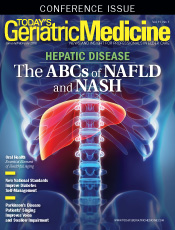
January/February 2018
Vintage Voices: Palliative Care at Home: Better Care, Fewer Burdens The vast majority of Americans want to die at home, yet the care they receive often fails to match their wishes. In California, for example, 70% of individuals surveyed said they wish to die at home, yet 68% are not given that chance.1 In fact, most people with advanced illness die in unfamiliar hospital settings where they are susceptible to overmedication and infection. It should come as no surprise that 72% of physicians choose to die at home.1 Fortunately, palliative care is helping patients receive the care they want where they want it, while also helping them live longer. As published in The New England Journal of Medicine, a study of 151 patients with advanced lung cancer found that those given early palliative care survived 11.6 months, nearly three months longer than those who received standard medical care.2 Community-based palliative care specialists are trained to ensure that patients who live at home receive the care they need to avoid unnecessary or unwanted care. This approach helps to lower the cost of care by reducing visits to the emergency department, ICU days, and in-hospital stays. As a result, Medicare beneficiaries and family caregivers avert high out-of-pocket expenses. Improving Care at Home Reducing Emotional and Economic Burdens Essentially, this model provides an extra layer of support that improves the experience of care for patients and family caregivers who need greater emotional, psychosocial, and spiritual support during this difficult time of life. The focus is on the person—not the disease process—and recognizes quality over quantity. — Rhea Go-Coloma, LMSW, is chief administrative officer for Hospice of the West in Phoenix. References 2. Temel JS, Greer JA, Muzikansky A, et al. Early palliative care for patients with metastatic non-small-cell lung cancer. N Engl J Med. 2010;363(8):733-742. |
